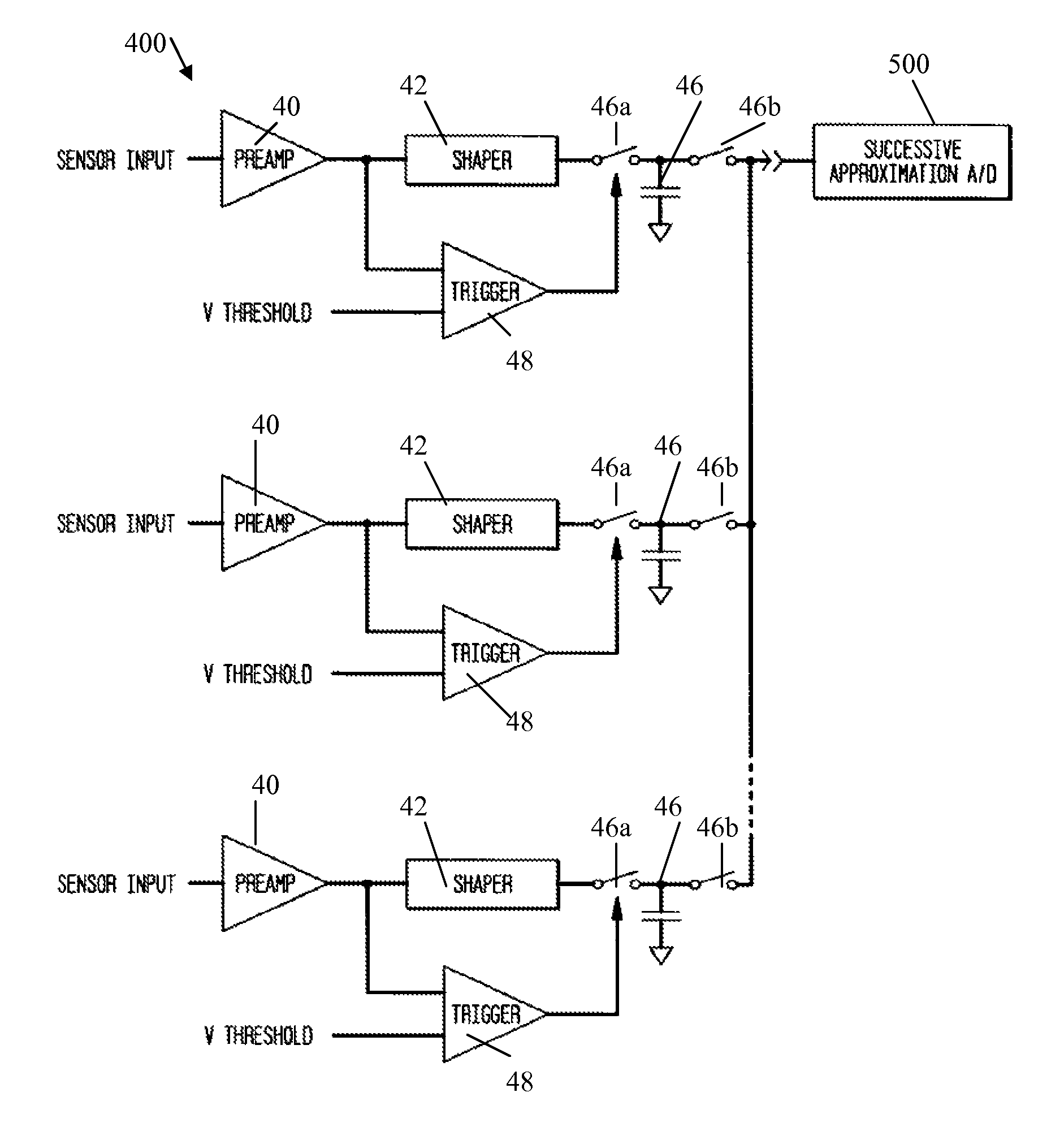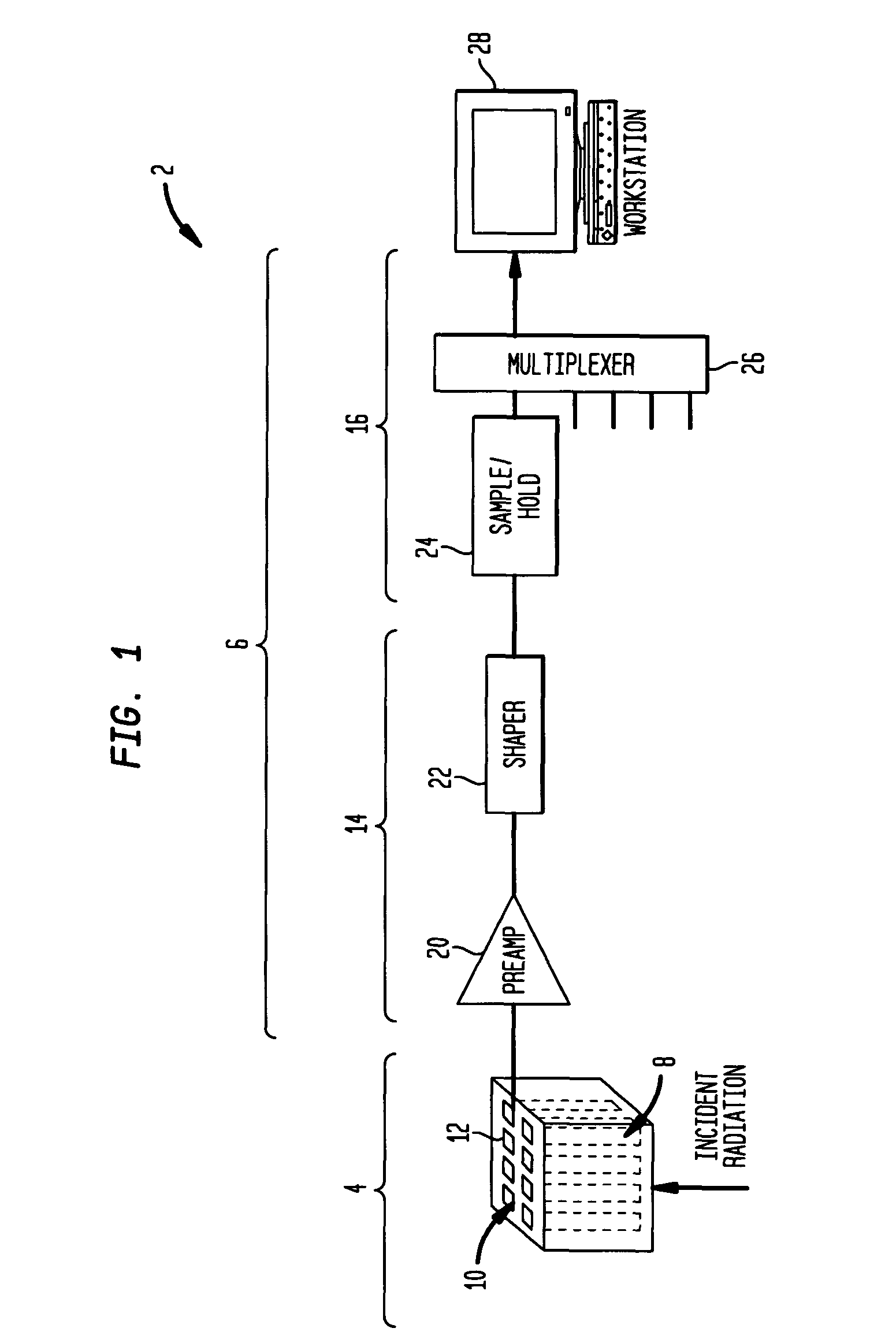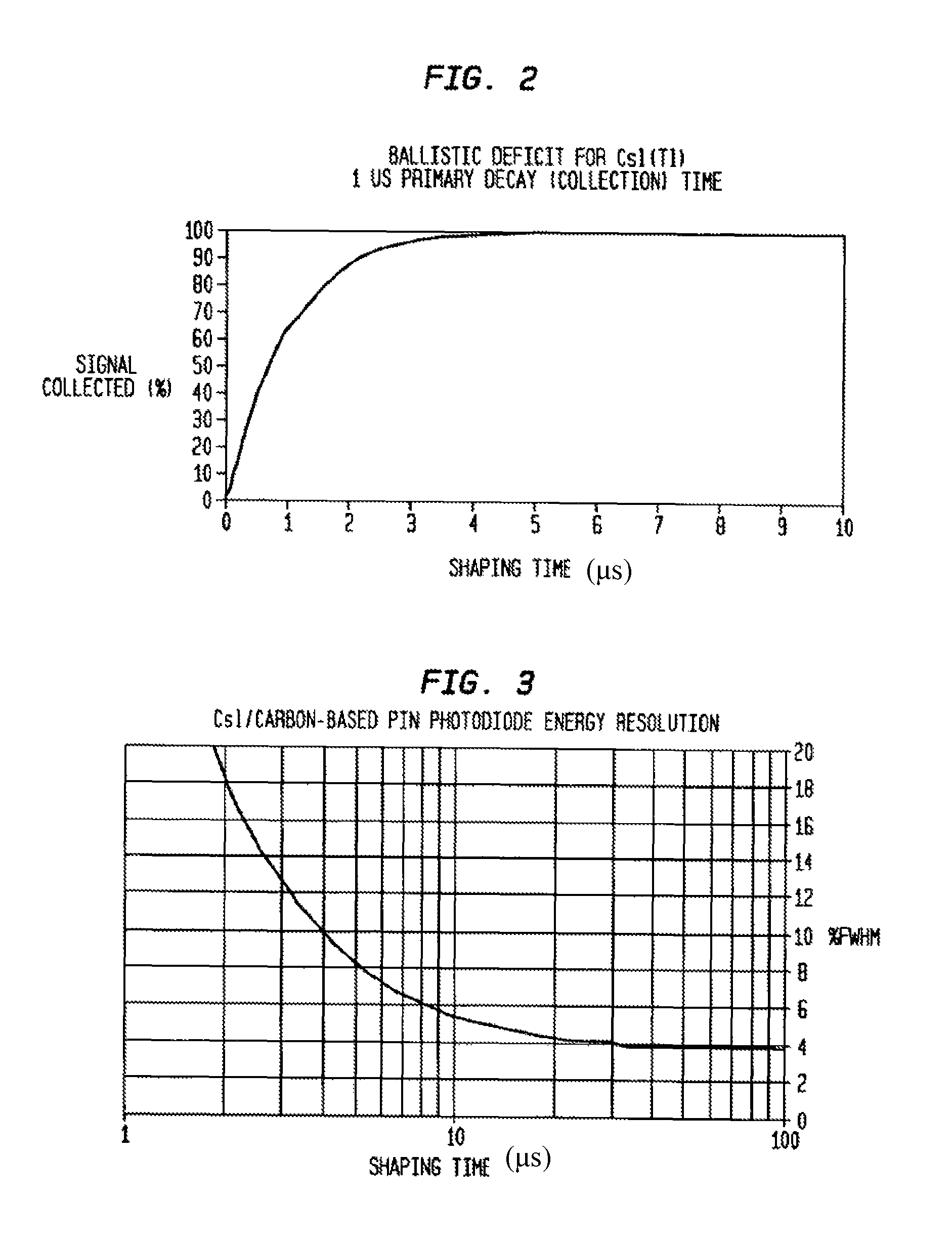Burst-mode readout for solid state radiation detectors using partitioned pipeline architecture
a pipeline architecture and readout technology, applied in radiation measurement, instruments, measurement devices, etc., can solve the problems of affecting the maximum count rate of the detector system, the pmt is susceptible to mechanical failure, and the pmt is susceptible to drifting performance, etc., to increase the maximum count rate of the detector system, the effect of low leakage current and high capacitan
- Summary
- Abstract
- Description
- Claims
- Application Information
AI Technical Summary
Benefits of technology
Problems solved by technology
Method used
Image
Examples
Embodiment Construction
Referring to FIG. 4, a partitioned pipeline read-out circuit architecture is disclosed according to a preferred embodiment of the invention. The pipeline read-out circuit architecture eliminates real-time constraints from off-chip read-out control electronics so that an efficient decoupled architecture is possible.
The front-end electronics includes a multi-channel ASIC 400 (Application Specific Integrated Circuit) with independently triggered charge sensitive pre-amplifiers 40, shaper circuits 42, and switched sample-and-hold capacitor circuits 46 (having electronically controlled switches 46a-46b) for each photodiode or pixel of the detector module. With this structure, individual photodiodes of the photodetector array can detect and store scintillation events independently and randomly. The ASIC 400 is interfaced to an external successive approximation A / D converter 500.
The detector acquisition system according to a preferred embodiment of the invention adaptively adjusts the even...
PUM
 Login to View More
Login to View More Abstract
Description
Claims
Application Information
 Login to View More
Login to View More - R&D
- Intellectual Property
- Life Sciences
- Materials
- Tech Scout
- Unparalleled Data Quality
- Higher Quality Content
- 60% Fewer Hallucinations
Browse by: Latest US Patents, China's latest patents, Technical Efficacy Thesaurus, Application Domain, Technology Topic, Popular Technical Reports.
© 2025 PatSnap. All rights reserved.Legal|Privacy policy|Modern Slavery Act Transparency Statement|Sitemap|About US| Contact US: help@patsnap.com



